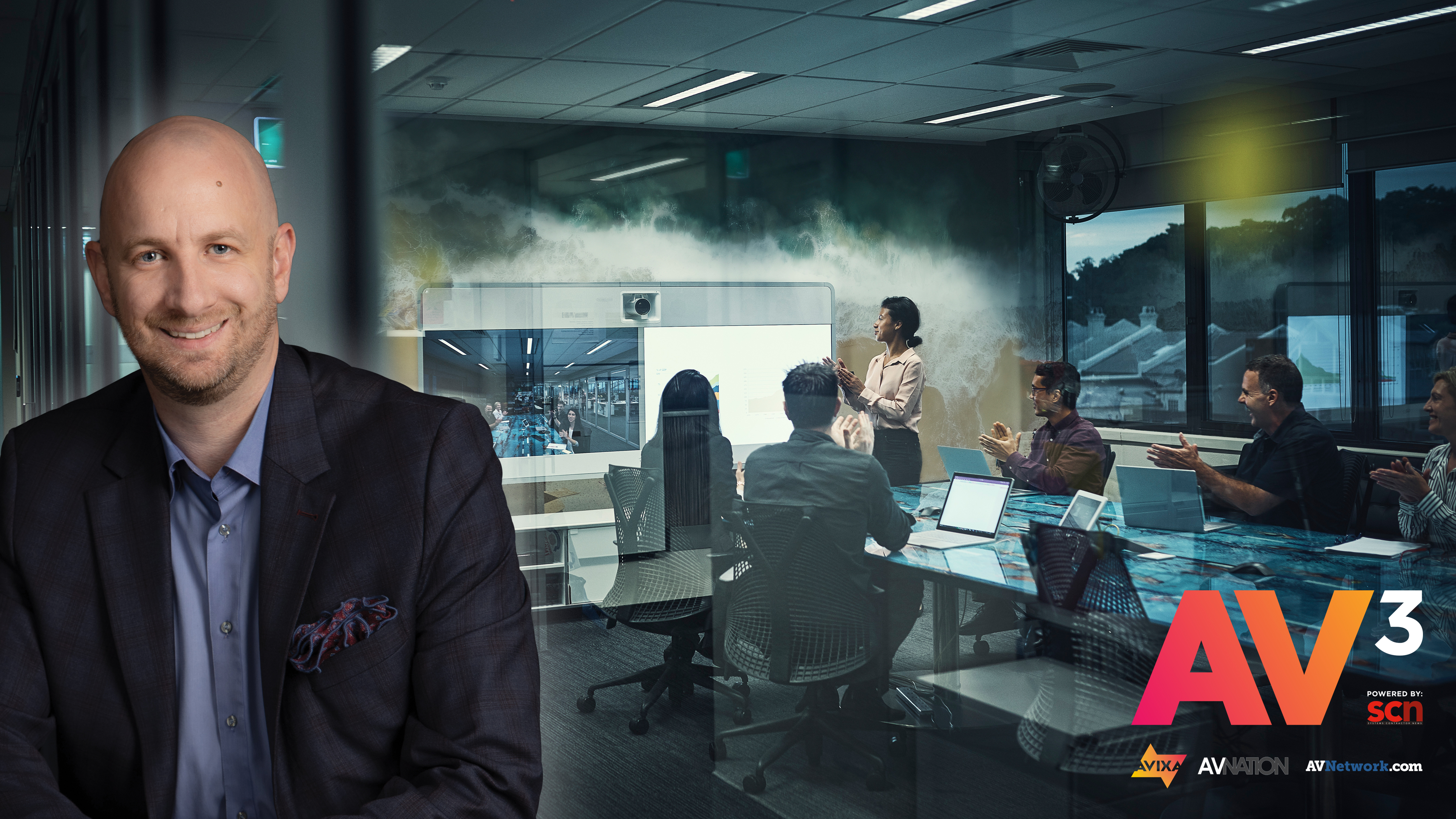What’s Next for Conferencing and Collaboration?

Everyone is tired of hearing about “the new normal” or how things are going to be vastly different after the age of COVID. Yes, things have changed, and yes, there is a desire to get back to the way things used to be. Will that ever happen? The answer is no ... but that is a good thing.
In terms of how business and meetings are conducted, the world was not asked to change, it was forced to change. And now, the idea of the hybrid meeting space is here to stay. What does this mean?
It is conducting meetings through a combination of the way it used to be (in the office) with the way many would argue it should have always been (from anywhere). It is not only meetings, but everything we do in our lives—weddings, concerts, art shows, trade shows, you name it, and it will start to have a hybrid or virtual component to it.
What does all of this mean for the professional AV industry and those of us who drive it? The exponential growth of everything.
The coming years will bring about a new age of technological breakthroughs from manufacturers we know and new innovations from many we do not. It will mean consultants and integrators being busier than ever with a new demand for spaces and experiences rich in audiovisual technology that are reliable and repeatable. The need for a consistent user experience and standards across larger enterprises will dominate, and the drive from consumers and employees for a reliable experience will ensure success for design and integration firms that understand and flawlessly execute this concept.
By establishing clear objectives and goals, users and designers can enhance their overall experience with meeting technology in the workplace, and AV companies will be able to capitalize on more than equipment. Ensuring that systems are well-received by all within the organization—whether using hardware, software, or a mixture of both—is the key to successful implementation of any system.
In the new, modern workplace, it is important to select the correct system addressing the problems of the organization while also ensuring that system is within budget and can provide a measurable ROI.
A daily selection of features, industry news, and analysis for AV/IT professionals. Sign up below.
On a basic level, it is important that all participants—both in the office and remote—receive a webcam as this allows for a more interactive and engaging experience. It is always recommended that all meeting participants, no matter their location, take special consideration of their environment including lighting, window treatment, room temperature, and being in non-reverberant rooms.
How do we answer the question “What’s next for conferencing and collaboration?”
Simply put, we don’t yet. We don’t know the specific technologies that the future will bring, but we do know that simple, fast, and reliable hybrid solutions will be driving modern meeting spaces. It is exciting to think about what cloud platforms, new camera technology, and advancing audio technology are on the horizon and hopefully someday soon we can all experience it together, and in-person.
Jeremy Caldera, CTS-D, CTS-I is speaking at AV³ on the "What’s Next for Conferencing and Collaboration?" panel on June 17. Click here to learn more about the virtual event.
Jeremy Caldera, CTS-D, CTS-I is an expert in the professional audiovisual industry with over 25 years of experience. Currently a senior vice president of audiovisual technology at Pearl Technology, a leader in AV and IT services based in Peoria, IL, Caldera specializes in the planning and design of audiovisual systems, organizational management, employee motivation, and the development of corporate standards and business growth strategies. Caldera is also a partner at BNCO Consulting and Top Shelf Digital Media.
Caldera is passionate about sharing his knowledge with others. He worked with his alma mater, Columbia College, to form a partnership with the Audiovisual and Integrated Experience Association (AVIXA) to develop an Audiovisual Systems Integration concentration within the college’s Audio Arts and Acoustics department. This partnership served as a model for what is now a major tenant of the AVIXA Foundation, which provides access to skills education, career pathways, and hands-on experiences to inspire the next generation of leaders in AV.
Caldera is an active volunteer both within the pro AV industry and his community. He previously served as the chair of AVIXA’s Certified Technology Specialist (CTS) Certification Program where he oversaw the development and administration of CTS, CTS-D, and CTS-I certifications. From 2017 to 2019, Caldera was a member of AVIXA’s Leadership Search Committee which appoints and develops mentors to serve on the AVIXA Board of Directors. He also is the chair of the committee for the renewal of the AVIXA/ANSI 2M standard. He currently serves on the board of directors for the Junior Achievement of Central Illinois and the Morton Premier Soccer Club.
Caldera holds a B.A. in Audio Arts and Acoustics from Columbia College, and has won several industry and community awards and honors, including: Systems Contractor News Hall of Fame (2021); iBi’s Peoria Top 40 Leaders under 40 (2017), the NSCA’s Randy Vaughan Founders Award (2017), AVIXA’s Educator of the Year (2017), Commercial Integrator’s 40 under 40 (2015), and AVIXA’s Young Professional Award (2015).

